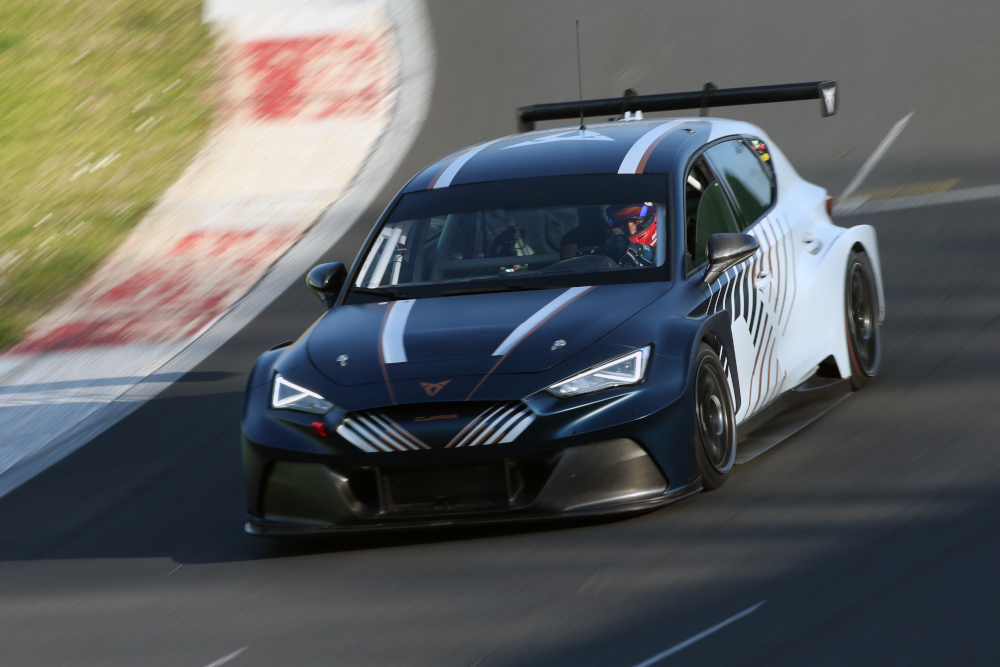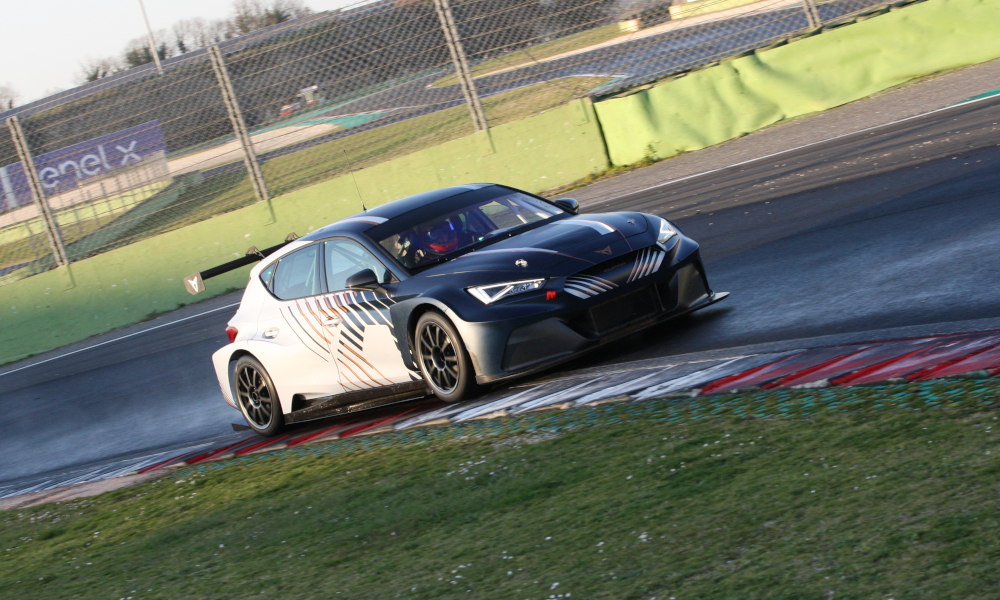Experienced touring car racer Jordi Gené says he is ‘proud’ to be part of the CUPRA electric TCR project, with the Spaniard saying that the car represents ‘the future… and it’s already here’.
Gené, 50, has competed in touring car racing since 1995, and has also experienced seasons of racing in truck racing and endurance racing, making his career one of the most diverse in motorsport.
Although Gené hasn’t raced competitively since 2017, he is set to become part of CUPRA’s driver line-up in the all-new PURE ETCR series later this year, exclusively for all-electric touring cars.
Being part of a new series is important to Gené, who has been a factory driver at CUPRA and its predecessor brand SEAT since 2003.
“I am very proud to be part of this new concept of competition,” said Gené. “The CUPRA e-Racer is also something totally new and I am very happy to have worked on the development from the beginning.
“I am looking forward to racing these cars, I hope I can remain competitive in the final stage of my career!”
Gené describes the unique challenges of the new ETCR car, which features torque and acceleration unlike any previous touring car ever developed.
“It is a very challenging car. It is a competition vehicle, totally electric, which represents a double challenge: The first is its development and the other, the driving.
“Electric cars generate great torque and great acceleration, and that is a challenge for those of us who get behind the wheel.
“With the previous generation we completed between 15 and 20 days of testing, in addition to some promotional days.
“With the new car we have done the first tests at Motorland-Aragón and Vallelunga, so it is still quite new for me.
“We are still learning things about the system, the electronics… The car is new, but not the electrical technology, because at CUPRA we have been working on the development of the CUPRA e-Racer for more than two years.”
CUPRA has been developing its ETCR car for more than two years now, and was recently joined by Hyundai for testing at the official WSC test sessions at Vallelunga in Italy. Gené has been sharing testing duties with CUPRA team-mates Mikel Azcona and Mattias Ekström.
“Until now we had a combustion car that had been adapted to carry batteries and an electric motor inside, but this generation has been conceived to be electric.
“It involves improvements in terms of weight distribution, the place where the batteries are placed, the aerodynamics are better… In short, it is a better car in every way.
“Inside we have the battery, which is a great load in there, and then we have the motor, the inverters and the controls, so it is not a very complex system… but it is to make everything work correctly and have the correct settings.
“Now, with electronics, you can make a difference with the car. That’s the goal: making all the systems work together.”

Despite the phenomenal performance of the car, Gené explains that the weight of the batteries represents a significant limitation in the new breed of racing car.
“The car is a lot of fun, especially since it’s a rear-wheel drive car, so when you’re going sideways or when the car is moving it’s a lot of fun.
“However, there is a handicap in the electric car, which is the weight. Having such large batteries makes it heavy and that in a race car is not all that good. But this is one of the things that we will work on with the engineers at CUPRA.
“Although it is heavier than the combustion engine version, the agility is still not lost, and with a rear-wheel drive car we can still have a lot of fun and a lot of show, because, in the end, racing is not just for us, but also for the spectators.”
Due to the lack of a gearbox, the weight of the batteries, the absence of sound and the high performance, Gené admits that the experience of driving an ETCR car is significantly different to the combustion-engined cars in which he made his name.
“It affects many things when driving. The first thing is the sensations: there is no noise, there is no gearbox … so the braking references are very different.
“This means that we have to make the car go straighter, so we always try to brake in a straight line, we take the corner as sharply as possible to get the car straight again to apply the power.
“The lines are different because the car’s corner speed is slower, so we try to make the most of it, which involves longitudinal braking and acceleration, to be turning as little time as possible.
“With combustion cars it is different, since we always carry more speed, and we use this speed to make the car turn.”
Gené, who took part in the inaugural TCR International Series in 2015, is unequivocal about the fact that ETCR represents the future of touring car racing.
“I think electric racing will have its fans. People will get used to it, because road cars are going in this direction and manufacturers are betting on this technology.
“This is the future… and it’s already here.”

